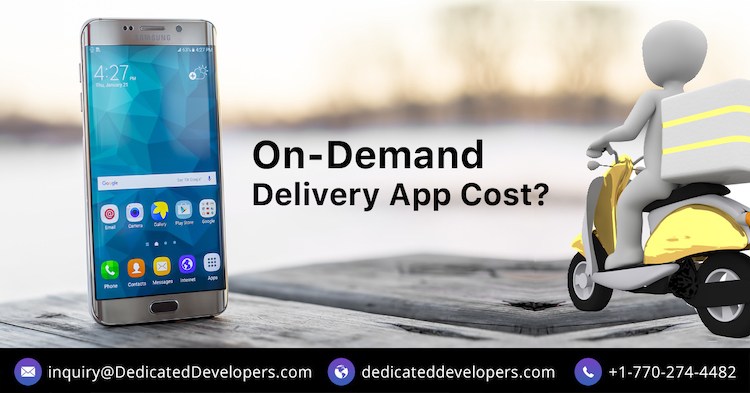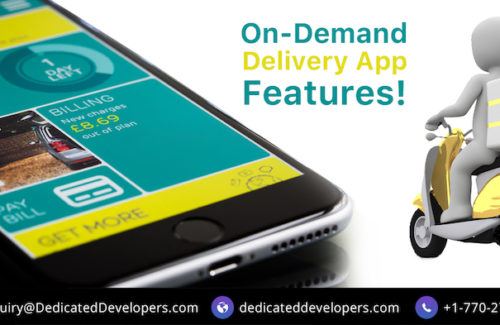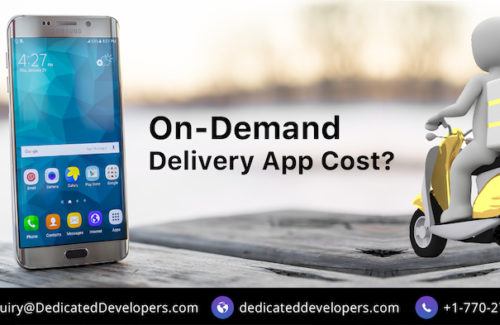
Direct delivery of goods and services has become an expected option for consumers these days. Using on-demand mobile apps to get what they want as quickly as possible has made this process even easier. Buyers are familiar with Uber, to get picked up where they want. This model has been expanded to now include delivery of countless other goods and services, from groceries and flowers, to hair dressers and doctors, to pizza and sushi. The choices seem endless.
Initial Planning
The profit margin for on-demand services must be carefully analyzed when you’re considering starting an on-demand app development. There have been a number of failures within the on-demand delivery sector, such as Shyp and UberRUSH. There simply wasn’t enough demand for consumers to pay the delivery costs within those business models. People want fast delivery, but simply aren’t willing to pay too much for it.
Other companies have been successful largely by making direct business arrangements with companies providing goods and services. One such example is within the food delivery niche. People are used to paying for food delivery. On-demand delivery companies have made deals with restaurants to share in the value of the delivery, along with being proactive in the marketing of those restaurants. It can be a win-win scenario when done right.
What Buyers Expect from a Delivery Service
Ease of Use – Buyers want to be able to place their orders easily. Any mobile app they use must be easy to use, and the app development company must make this a top priority during development.
Fast Delivery – Buyers expect their deliveries to be fast. When deciding on a delivery area, the time it takes to go from ordering to final delivery needs to be well planned.
Competitive – People want a bargain, and don’t want to pay premium prices. When planning your app development you need to carefully plot out these costs so you can gain an advantage in the marketplace.
Drivers – It’s now common practice to use independent contractors for deliveries. This is especially useful when your long term business plan is to have your services available in a large number of locations. This model also allows you to expand and scale a lot more. You can start small, and grow much easier without as much overhead. It also allows you to deliver various types of different products that require different vehicles.
Payments – Consumers want seamless payment options. The vast majority of people want to click-and-go. Adding a variety of easy to use payment options is a must in any on-demand app development.
Feedback and Ratings – Both buyers and drivers nowadays expect to be able to rate each other. This gives everyone the ability to improve their services, and allows the company to know which drivers are in demand the most and which aren’t, and which customers are the most troublesome or the most appreciative. This feedback can be used strategically to improve both their business and their reputation.
On-Demand App Features
On-demand mobile apps are generally quite feature intensive, simply due to all the functions that are required. We’ll cover some of the core basics and some highly recommended features that should be included to make an app that’s competitive in today’s market. These features will play a big part in what will ultimately go into the cost estimation portion of the mobile app planning.
- Order placement process
- Driver scheduling and assignment
- Live mapping and tracking of deliveries
- Flexible payment options
- Feedback and rating system for buyers, and sometimes for drivers also
For on-demand delivery apps for retail, grocery stores, and restaurants, there are additional features that will need to be included:
- Product listing and search
- Shopping lists or product bundles
Other important features that make the user experience better and that more and more users are expecting these days include:
- Wish lists
- Live calls and messaging
Business Models to Consider
The business model you choose can go a long way to improving your chances for success. Choose a model you understand, that’s shown success in the marketplace, and where you have a clear understanding of how you can provide an improvement or competitive edge to what already exists. Here’s an example of the process of setting up a Fuel Delivery App.
Working out a method of dealing with the cost of drivers is one of the most important factors. Since the cost of delivery is high, learning ways to optimize this will go a long way to success.
Some successful companies have found ways to pay drivers only for one direction. They work with drivers who are in a location right now near the pickup area, so they only have to pay for the driver from the retail outlet to the buyer’s location.
Other companies have chosen to also include bike couriers. The overhead costs for maintaining a bike is significantly lower than vehicles.
Starting locally, in densely populated areas is always a good way to begin. You can keep the overhead costs to a minimum, and test out a variety of methods to see what works the best.
Partnering with existing businesses to share in the prices charged is also a great way to get started. It also allows you to build a solid reputation, that you can then use to expand and scale.
Project Cost Estimation
The costs of developing on-demand mobile apps is higher than the average app. The bare minimum features is more labor intensive with a lot of advanced features. Some of the factors that affect the overall cost estimation are:
- Core and additional functions and features
- Third party requirements such as database hosting and APIs
- Security and privacy
- Complying with state and federal regulations and tax laws
- UX and UI designing and optimizing
- Overall development costs – backend and frontend
Conclusion
When you get to the point where you’re ready to start developing your delivery app, be sure to contact us. We’ll work with you to build an on-demand app that’s just right for your business needs and future plans.











